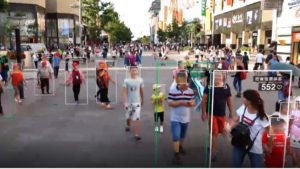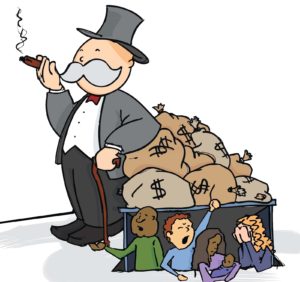I chose to analyze the Leave No Dark Corner article by ABC News. To do so I created a Twitter Rant which worked out to 11 tweets that both summarized and reflected on the article and related the concepts discussed back to a classroom setting.
Prior to reading this article I had no idea that there were projects of the like taking place around the world. I have seen this concept in different movies and video games, but I always perceived it to be invasive and unrealistic. Throughout the text I learned most about how the project would impact the lives of the public by engaging in the testimonial stories from two Chinese citizens who are at different levels on the Social Credit scale.
First and foremost, the article presented Social Credits, a new type of socia l engineering underway in China, which ultimately creates a Digital Totalitarian State. Social credits are essentially a score out of eight or nine hundred that each citizen has that influences their day-to-day activities. Those with higher scores will receive more education and job opportunities as well as VIP treatment in establishments including airports, restaurants, and financial institutions. The score is calculated through an array of 200 million CCTV cameras equipped with facial recognition and geo-thermal technology that cover every corner of the city. The score is influenced by every action made, item purchased, social interaction, and dollar held. All of these will determine whether one is given ample opportunities or shutout from society as a whole.
l engineering underway in China, which ultimately creates a Digital Totalitarian State. Social credits are essentially a score out of eight or nine hundred that each citizen has that influences their day-to-day activities. Those with higher scores will receive more education and job opportunities as well as VIP treatment in establishments including airports, restaurants, and financial institutions. The score is calculated through an array of 200 million CCTV cameras equipped with facial recognition and geo-thermal technology that cover every corner of the city. The score is influenced by every action made, item purchased, social interaction, and dollar held. All of these will determine whether one is given ample opportunities or shutout from society as a whole.
In relating this article back to a classroom I found there to be many similarities. There is a current push in education to incorporate technology in the classroom. More specifically, institutions have started using software that tracks student behaviour, engagement, and performance. Through tracking, the students are then rewarded in some way for high scores. In a strange way, it seems very similar, yet to a lesser extent, than the Digital Totalitarian State presented by the Chinese government. Given that similarity, where should the line be drawn?
I then explored a few pros and cons to this concept. First is that some stu dents will embrace the abundance of opportunities and responsibilities they might earn that they would not have received otherwise. Second is that this technology could be another means to marginalize students that do not perform at grade level. Instead of receiving more assistance, they may be pushed to the side for the other high achieving students. A clear “rich get richer” type of mentality where the students working at or above grade level receive all of the praise and opportunity where as those below grade level sink that much further.
dents will embrace the abundance of opportunities and responsibilities they might earn that they would not have received otherwise. Second is that this technology could be another means to marginalize students that do not perform at grade level. Instead of receiving more assistance, they may be pushed to the side for the other high achieving students. A clear “rich get richer” type of mentality where the students working at or above grade level receive all of the praise and opportunity where as those below grade level sink that much further.
There are clearly benefits to technology in the classroom, I believe that there are still quite a few significant limitations to its implementation on a full scale perspective in schools. For now new technologies should continue to be explored by school boards and prospective teachers.
